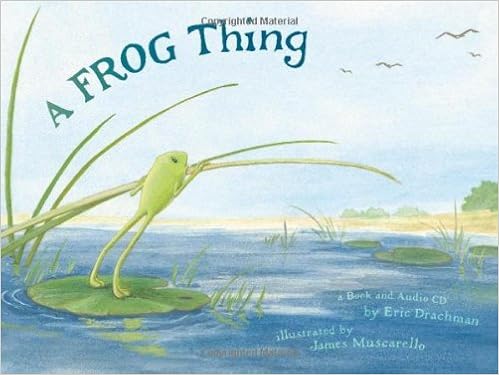This summer I am the design thinking enrichment teacher for our Summer Bridge program. Because literacy is a focus, I decided to base my maker/design thinking projects on picture books. I work with each grade level for one hour a week and the fifth through eighth grade students see me twice a week. Here is a list of the books I chose and the activities that go with them. I'll also include my slide deck from my EdTechTeam K2CanToo conference presentation. I bought materials for all activities at Dollar Tree #$TreeMakers. If you click on the image of the book it will take you to an Amazon link.
The Dot:
 CLICK HERE for Amazon Link
CLICK HERE for Amazon Link
For this activity I read the dot to the students and have them create their dot. They can draw, use maker materials, or create an online dot using Google Draw or other tools. The design thinking part of the activity introduces empathy to the students. So in creating their dots, they have to introduce themselves to the "audience" and help the audience empathize with them as a person and a learner.
Empathy for Vashti and her fear of drawing
A Frog Thing:
 CLICK HERE for Amazon Link
CLICK HERE for Amazon Link
I love this book for so many reasons but one of the main ones is that it was one of my son's favorite books for me to read aloud to him. The story is about Frank who is a frog that wants to fly. His parents tell him he can do anything and when he tells them he wants to fly, they backtrack and tell him they meant he could do any "frog thing". This book is a great segue into discussing with students that as humans we have invented things that enable us to break out of only being able to do "human things"
For this maker challenge the students have to create a way for Frank to fly. I bought plastic frogs a dollar tree for the students to use to design a flying apparatus that will fly Frank across the room. The students have to research flight and come up with a way for Frank to fly.
Empathy for Frank and his desire to fly.
If I Built a Car:
 CLICK HERE for Amazon Link
CLICK HERE for Amazon Link
After reading this book to the kiddos, they are tasked with building a balloon car using paper plates, straws, skewers, cups, and tape. I allow the students to use Chromebooks to look up and figure out how to build a balloon car. Step two is to have them add motors to their cars.
The Three Little Pigs an Architecture Tale:
 CLICK HERE for Amazon Link
CLICK HERE for Amazon Link
For this design challenge the students have to build a house with the provided materials that is wind proof (hair dryer test) and earthquake proof (shake the desk test). The students may use a variety of materials such as straws, pipe cleaners, tape, craft sticks, paper plates, whatever stuff I grab at Dollar Tree.
Empathy for the three pigs and their need to be safe from the big bad wolf.
Dogzilla:
 CLICK HERE for Amazon Link
CLICK HERE for Amazon Link
For this design challenge, the students need to build a catapult that will shoot food outside of Mouseopolis and save the giant barbecue from Dogzilla who wants to eat everything. For this challenge the students can use spoons, rubber bands, craft sticks, and any other maker materials I have around.
Empathy for the mice in Mouseopolis who are fearful of Dogzilla.
Now and Ben:
 CLICK HERE for Amazon Link
CLICK HERE for Amazon Link
For this challenge the students create squishy circuits using play dough, batteries, wires, electrical tape, and LED lights. I get materials from amazon for this challenge. The students also explore electricity by making name tags that light up with LED lights and 3 volt batteries. Finally, the students use vibration motors from dollar tree electric toothbrushes and make scribble bots. They make the bot out of pieces of pool noodles and decorate them with feathers, stickers, pipe cleaners all from Dollar Tree.
I love that I use these books and challenges for students grades K - 8. Each grade level tackles the challenge differently and it is amazing to watch them make and create and figure it out.
Here is my K2CanToo presentation:
http://bit.ly/PicBookMaker
Here is a link to some photos from our Summer Bridge design challenges:
CLICK HERE

 CLICK HERE for Amazon Link
CLICK HERE for Amazon Link CLICK HERE for Amazon Link
CLICK HERE for Amazon Link CLICK HERE for Amazon Link
CLICK HERE for Amazon Link CLICK HERE for Amazon Link
CLICK HERE for Amazon Link CLICK HERE for Amazon Link
CLICK HERE for Amazon Link CLICK HERE for Amazon Link
CLICK HERE for Amazon Link